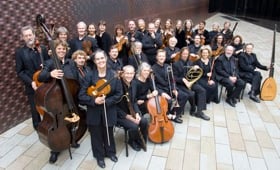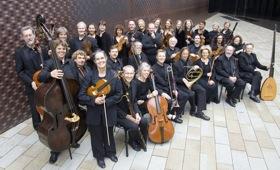According to the Bible, it took God six days to create our world. It took Haydn two years to describe those days in music, with help from the biblical narrative, Milton’s Paradise Lost, and a couple of psalms. His labors (as did God’s) succeeded in a monumental achievement. Under the baton of Nicholas McGegan, the story of The Creation was told in marvelous detail by the Philharmonia Baroque Orchestra and Chorus and three soloists, Sunday night at the First Congregational Church of Berkeley.

Related Articles
Extraordinary Lorraine Hunt Lieberson
A new release from the PBO archive
Zheng Cao’s Magnificence Graces Philharmonia Baroque
An astounding series of performances
Out of the opening Chaos, the large Philharmonia Chorus sang “Let there be light,” and there was indeed light. Tenor Thomas Cooley, as the angel Uriel, was electrifying, describing the first day as if he himself were experiencing the awe and beauty of the light. His every ensuing announcement — eloquent in diction, every word mattering — rang with excitement and wonder. The chorus enthusiastically joined him in celebration of the amazing events.
The orchestra gave wonderful expression to Haydn’s love of detail, “rolling in foaming billows,” “softly purling” as a “limpid brook,” rising “in splendor bright” with the sun, creating “great whales” with a platoon of bass instruments, welcoming the “fullest glory” of the Earth with bright brasses, expressing “joy and bliss” in a tune sweetly played by the cellos as Eve was introduced, and underlining the tread of “heavy beasts” with the huge contrabassoon. What a feast of musical description Haydn created, and how delightfully the orchestra served it!
Dominique Labelle was the angel Gabriel in Parts 1 and 2, Eve in Part 3. Among many brilliant solo and ensemble moments in her performance, a standout was her singing of “On Mighty Pens.” The pens are the eagles’ wings, and we also got larks, doves, and a nightingale. Her inventive ornamentation and melodic changes made the repetitious aria into a tour de force, beautifully supported by flutist Janet See as a lovely nightingale and oboist Marc Schachtman animating the other birds.
Labelle, Cooley, and baritone Philip Cutlip, as Raphael, made a splendid trio in Parts 1 and 2. Cutlip also sang a tender Adam, with Labelle’s Eve. Their extended scene can be a bit of a trial for modern audiences, but the responsibility for that rests with Haydn, not with these gifted singers. The idea that a woman should be obedient to a man has gone out of fashion, and the idea that, of all God’s creations, human beings are the best, rings hollow at a time when humans seem intent on destroying God’s creation and each other. Haydn thought we were all Enlightened, like himself. Let’s hope that we evolve in the direction he had in mind.

